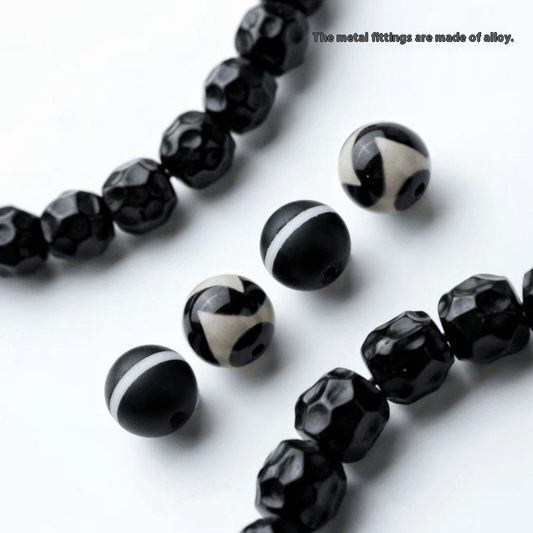
Inside the elaborate network inside Tibetan faith systems stand two meaningful icons: the colorful thangka and consecrated bodhi token. Each, in its own unique way, serves as a conduit to spiritual enlightenment. The thangka, a colorful canvas, shows holy beings, mystical shapes, or doctrinal episodes, providing insight for inner reflection.
Alternatively, the bodhi bead, often crafted from noble stones, grain, pips, or osseous tissue, is a tangible reminder of Buddha's awakening under the bodhi tree. Holding these beads during prayer or meditation helps to focus the mind.
- Simultaneously, the thangka and the bodhi bead represent the synergy between expression and belief. They offer a tangible link to the age-old knowledge of Tibetan Buddhism.
Camel Bone Whispers
Within historic timelines, historic treasures whisper tales pertaining to a world long departed. These are not precious objects associated with abandoned empires, but modest camel bones carved with designs that hold the unknowns of a bygone generation. Every fragment holds the echo derived from a life lived, a journey completed, and a connection to the sacred wisdom which encompasses us all.
- Such relics
- Gifts
- Offer
Understanding the Iconography of Thangka Creations
Tangkas are glowing paintings on canvas, meticulously crafted by Tibetan artists to depict revered figures and scenes from Buddhist traditions. Each detail within a thangka is laden with relevance, forming a complex tapestry of visual narratives that guide the viewer on a mindful journey. The tones used in thangkas are not merely aesthetic choices but carry meaningful connotations, exemplifying different aspects of the Buddhist tradition. From the austere figures to the intricate patterns, thangkas offer a view into the rich world of Tibetan Buddhism, inviting us to ruminate upon its teachings.
- Historical thangka art often depicts key Buddhist figures such as Buddha Shakyamuni, Bodhisattvas like Avalokiteshvara and Manjushri, and enlightened beings from various branches of Tibetan Buddhism.
- Inside these representations lies a wealth of knowledge that can be interpreted by those who analyze the symbolic language of thangkas.
Tathagata's Path to Enlightenment: Embodied in Beads and Bone
Upon the winding route to awakening, the Buddha wielded emblems imbued with profound importance. Individual bead and material held within them the substance of his guidance, expressing glimpses into the matrix of reality. Through their shape, the Buddha imparted profound knowledges that go beyond the realm of prosaic perception.
From chosen sacred beads, crafted from rare materials, dispersed vibrations that synchronized with the nuanced powers within. The substance of a existence, meticulously transformed into talismans, served as tangible reminders of the impermanence constitutional to all realities.
Thangkas: Windows into Himalayan Spirituality
Thangkas radiant paintings on cloth serve as powerful representations of Himalayan spirituality. These intricate works of art, meticulously created with artful brushstrokes, depict a vast array featuring Buddhist deities, mandalas, and scenes from holy scriptures. Each thangka is an invaluable tool for meditation and contemplation, offering cognition into the multifaceted teachings of Buddhism.
- They are often used in ritual ceremonies for
- eliciting states of spiritual illumination.
- Thangkas are not merely decorative works but rather windows into the rich and spellbinding world of Himalayan spiritual traditions.
The Allure of Bodhi Beads: Exploring Mindfulness and Compassion
Each pellet on a bodhi bead mala whispers tales of ancient wisdom, guiding us on a pilgrimage through the tranquil waters of mindfulness. As we clutch these intricately formed beads, our fingers trace the contours of every one, anchoring our consideration in the present moment. The gentle weight of the beads against our palms serves as a tangible reminder to respire, fostering a sense of calm.
- Upon each bead that passes between our fingers, we nurture compassion, extending it first to ourselves and then outward to the world.
- Sacred teachings teaches us that mindfulness is a art form that requires patience and endurance.
Through the rhythmic repetition of mantra or simply the mindful observation of the beads, we emancipate from the relentless chatter of the mind.
The practice engaging with bodhi beads is a delicate invitation to reawaken our connection with ourselves and the world around us.
Unleashing Intention: Creating a Camel Bone Bracelet for Enlightenment
Will serves as a dynamic impulse in our lives, shaping our experiences and guiding us towards our fated course. When we combine this intention with the venerable truths of crafting a camel bone bracelet, we create a potent synergy that can propel our spiritual growth.Camel bone remains deeply resonant, representing resilience. Its natural beauty and timeless allure serve as a constant reminder of the inherent power within each of us.In the process of handpicking each bone, embed spiritual goals. With every knot or tie, we embody our hopes, dreams, and aspirations for spiritual evolution. This act of creation becomes a sacred ritual, blending us with our inner wisdom and guiding us on a road to insight.- Let the natural hues and textures of the bone guide your vision.
- Imagine your dreams threading through each crafted segment.
- Wear it as a constant reminder of your commitment to growth and transformation.
Camel Bone and Buddhist Symbolism: A Legacy of Meaning
In the rich tapestry throughout Buddhist tradition, artifacts often hold profound symbolic meaning. Within these varied objects, camel bone stands out as a unusual and engaging element. Across history, this material has been utilized in the crafting for various Buddhist tools, each imbued with specific denotations.
- Acknowledged as a symbol of resilience and strength due to the camel's ability to overcome in harsh environments, camel bone often represents spiritual fortitude.
- Additionally, the color and texture with camel bone are believed via some to hold auspicious connotations, indicating purity and serenity.
Hence, camel bone has become a prized part of Buddhist legacy, serving as a tangible bond to the profound teachings contained in this ancient faith.
Thangka Panels: Visual Sacred Lore
Within the ethereal realm of Tibetan Buddhism, Thangka paintings emerge as sacred portals to enlightenment. These exceptional works, meticulously crafted by skilled artists known as thangkapa, depict a myriad including vibrant deities, celestial beings, and mythical creatures. Each brushstroke fills profound spiritual significance, narrating ancient tales and philosophical ideas.
- Spanning a vast library of Buddhist iconography, Thangkas serve as both devotional objects and instructional tools. Committed practitioners gaze upon these paintings during rituals and meditations, seeking to gain spiritual wisdom.
- Luxuriously ornamented with intricate details alongside a multitude of vibrant hues, Thangkas are considered windows into the divine. Each painting acts as a symbolic representation of the Divine Figure's teachings and the path to liberation.
With the aid of their forceful imagery and symbolism, Thangka paintings offer a glimpse into the rich mystical traditions of Tibet. They are a testament to the enduring grace of Tibetan art and its profound ability to invigorate.
Embracing the Duality: Thangkas and the Cycle of Life and Death
Thangkas, intricately detailed Tibetan paintings, illustrate a profound dialogue on the temporary aspect of life. Each intricate portrait depicts deities and beings engaged in the developing cycle of life and death, a concert of birth, growth, impermanence, and transformation. The artists skillfully integrate these concepts within the thangka's environment, highlighting the harmony of all things. Through vivid representations, they invite us to contemplate on our own being. The cycle circulates, a dance of coming and going, accentuating the preciousness of each moment. By embracing this duality, thangkas teach us to acknowledge the beauty in both life's joys and sorrows.Threads of Devotion: The Significance of Bracelets in Buddhist Practice
In the intricate tapestry of Buddhist practice, seemingly humble objects often hold profound meaning. Among these are bracelets, which serve as tangible signs of devotion and commitment to the philosophy of Buddha. Worn on the wrist, a bracelet exists as a constant reminder of one's aspirations and aspirations. It can represent the impermanence of life, prompting practitioners to remain focused in the present moment. Some bracelets may include sacred drawings, such as mantras or the names of Buddhas, which are believed to attract positive energy and well-being. Others are often made from ingredients with spiritual significance, like sandalwood or lotus seeds, boosting the bracelet's potency. Ultimately, the significance of a Buddhist bracelet derives far beyond its physical form. It becomes a powerful tool for meditation, a catalyst to live in harmony with the teachings of Buddha, and a manifestation of Buddhabelief one's unwavering trust.